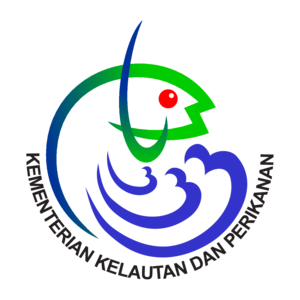Karakter Morfologis dan Ekologis Keong Potamididae (Gastropoda) dari Habitat Mangrove Gugus Pulau Pari, Jakarta
Abstract
Keywords
Full Text:
PDFReferences
Arbi, U. Y. (2013). Inventarisai jenis-jenis moluska yang potensial sebagai pakan alami kepiting bakau di pertambakan Probolinggo, Jawa Timur. Laporan Penelitian. Tidak Dipublikasikan.
Altena, C.O. van Regteren. (1941). The marine Mollusca of the Kendeng Beds (East Java). Gastropoda Part II (families Planaxidae-Naticidae inclusive). Leidsche Geologische Mededeelingen, 12(1), 1-86.
Ayunda, R. (2011). Struktur komunitas Gastropoda pada ekosistem mangrove di Gugus Pulau Pari, Kepulauan Seribu. Skripsi FMIPA Universitas Indonesia, Depok: 70pp.
Budiman, A. (1988). Some aspects on the ecology of mangrove whelk Telescopium telescopium (Linné, 1758) (Mollusca, Gastropoda: Potamididae). Treubia, 29(4), 237-245.
Budiman, A. (1991). Penelaahan beberapa gatra ekologi moluska bakau Indonesia. Disertasi Fakultas Pasca Sarjana Universitas Indonesia, Depok: 380 hal.
Egonmwan, R.I. (2008). The ecology and habitat of Tympanotonus fuscatus var. radula L. (Cerithiacea: Potamididae). Journal of Biological Sciences, 8(1), 186-190.
Fratini, S., Cannicci, S., & Vannini, M. (2000). Competition and interaction between Neosarmatium smithi (Crustacea: Grapsidae) and Terebralia palustris (Mollusca: Gastropoda) in a Kenya mangrove. Marine Biology, 137, 309-316.
Fratini, S., Vigiani, V., Vannini, M., & Cannicci, S. (2004). Terebralia palustris (Gastropoda; Potamididae) in Kenyan mangal: Size structure, distribution and impact on the consumption of leaf litter. Marine Biology, 144, 1173-1182.
Fratini, S., Vannini, M., & Cannini, S. (2008). Feeding preference and food searching strategies mediated by air- and water-borne cues in the mud whelk Terebralia palustris (Potamididae: Gastropoda). Journal of Experimental Marine Biology and Ecology, 362, 26-31.
Houbrick, R. S. (1991). Systematic review and functional morphology of the mangrove snails Terebralia and Telescopium (Potamididae; Prosobranchia). Malacologia, 33(1-2), 289-338.
Jamabo, N. A. & Davids, C.B.D. (2012). The food and feeding habit of Tympanotonus fuscatus var. fuscatus (Linnaeus, 1758) in the mangrove swamps of the Bonny River, Niger Delta, Nigeria. Research Journal of Agricultural Science, 3(5), 1120-1122.
Jutting, W.S.S.J van. (1956). Systematic studies on the non-marine Mollusca of the Indo-Australian Archipelago. V. Critical revision of freshwater gastropods. Treubia, 23(2), 259-477.
Kamimura, S. & Tsuchiya, M. (2004). The effect of feeding behavior of the gastropods Batillaria zonalis and Cerithideopsilla cingulata on their ambient environment. Marine Biology, 144, 705-712.
Katherisan, K. (2001). Ecology and environment of mangrove ecosystems. Centre of Advanced Study in Marine Biology, 2, 101-115.
Lorda, J. & Lafferty, K.D. (2012). Shading decreases the abundance of the herbivorous California horn snail, Cerithidea californica. Journal of Experimental Marine Biology and Ecology, 432-433, 148-155.
Mujiono, N. (2009). Mudwhelks (Gastropoda: Potamididae) from mangrove of Ujung Kulon National Park, Banten. Jurnal Biologi, 13(2), 51-56.
Nagelkerken, I., Blaber, S. J. M., Bouillon, S., Green, P., Haywood, M., Kirton, L. G., Mainecke, J.O., Pawlik, J., Penrose, H. M., Sasekumar, A., & Somerfield, P. J. (2008). The habitat function of mangroves for terrestrial and marine fauna: A review. Aquatic Botany, 89(2), 155-185. DOI:10.1016/j.aquabot.2007.12.007
Pape, E., Muthumbi, A., Kamanu, C. P., & Vanreusel, A. (2008). Size-dependent distribution and feeding habits of Terebralia palustris in mangrove habitats of Gazi Bay, Kenya. Estuarine Coastal and Shelf Science, 76(4), 797-808. DOI:10.1016/j.ecss.2007.08.007
Penha-Lopes, G., Bouillon, S., Mangion, P., Macia, A. , & Paula, J. (2009). Population structure, density and food resources of Terebralia palustris (Potamididae: Gastropoda) in a low intertidal Avicennia marina mangrove stand (Inhaca Island, Mozambique). Estuarine, Coastal and Shelf Science, 84(3), 318-325. doi.org/10.1016/j.ecss.2009.04.022
Penha-Lopes, G., Bartolini, F., Limbu, S., Cannici, S., Mgaya, Y., Kristensen, E., & Paula, J. (2010). Ecosystem engineering potential of the gastropod Terebralia palustris (Linnaeus, 1767) in mangrove wastewater wetlands – A controlled mesocosm experiment. Environmental Pollution 158(1), 258-266. https://doi.org/10.1016/j.envpol.2009.07.009
Reid, D.G., Dyal, P., Lozouet, P., Glaubrecht, M., & Williams, S. T. (2008). Mudwhelks and mangroves: The evolutionary history of an ecological association (Gastropoda: Potamididae). Molecular Phylogenetics and Evolution, 47(2), 680-699. DOI:10.1016/j.ympev.2008.01.003
Roberts, D., Soemodihardjo, S., & Kastoro, W. (1982). Shallow Water Marine Molluscs of North-West Java. LON LIPI, Jakarta: 143 pp.
Slim, F. J., Hemminga, M. A., Ochieng, C., Jannink, N. T., Cocheret de la Morinière, E., & Velde van der, G. (1997). Leaf litter removal by the snail Terebralia palustris (Linnaeus) and sesarmid crabs in an East African mangrove forest (Gazi Bay, Kenya). Journal of Experimental Marine Biology and Ecology, 215(1), 35-48. https://doi.org/10.1016/S0022-0981(97)00029-4
Sukarjo, S. (2006). Botanical exploration in small islands: 1. Floristic ecology and the vegetation types of Pari Islands, West Java, Indonesia. South Pacific Studies, 26(2), 73-99.
Tomlinson, P. B. (1994). The Botany of Mangroves. P.B. Tomlinson (Ed.), Cambridge University Press.
Vannini, M., Lori, E., Coffa, C., & Fratini, S. (2008). Cerithidea decollata: A snail that can foresee the future?. Animal Behaviour, 76(3), 983-992. DOI:10.1016/j.anbehav.2008.05.016
Vlerk, I. M. van der. (1931). Caenozoic Amphineura, Gastropoda, Lamellibranchia and Scaphopoda. Leidsche Geologie Mededeelingen, 5, 206002D296.
Wells, F. E. (2003). Ecological separation of the mudwhelks Terebralia sulcata (Born, 1778) and T. semistriata (Mörch, 1852) (Gastropoda: Potamididae) from northern Australia. The Nautilus, 117(1), 1-5.
Wells, F. E. & Lalli, C. M. (2003). Aspects of the ecology of the mudwhelks Terebralia palustris and T. semistriata in northwestern Australia. In: Wells, F.E., D.I. Walker and D.S. Jones (eds.) 2003. The Marine Flora and Fauna of Dampier, Western Australia. Western Australian Museum, Perth: 193-208.
DOI: http://dx.doi.org/10.15578/jkn.v17i2.8218
Copyright (c) 2022 Ucu Yanu Arbi
Copyright of Jurnal Kelautan Nasional (p-ISSN 1907-767X, e-ISSN 2615-4579)
Pusat Riset Kelautan
Badan Riset dan Sumberdaya Manusia Kelautan dan Perikanan
Kementerian Kelautan dan Perikanan
Index by
 Jurnal Kelautan Nasional
Jurnal Kelautan Nasional
















